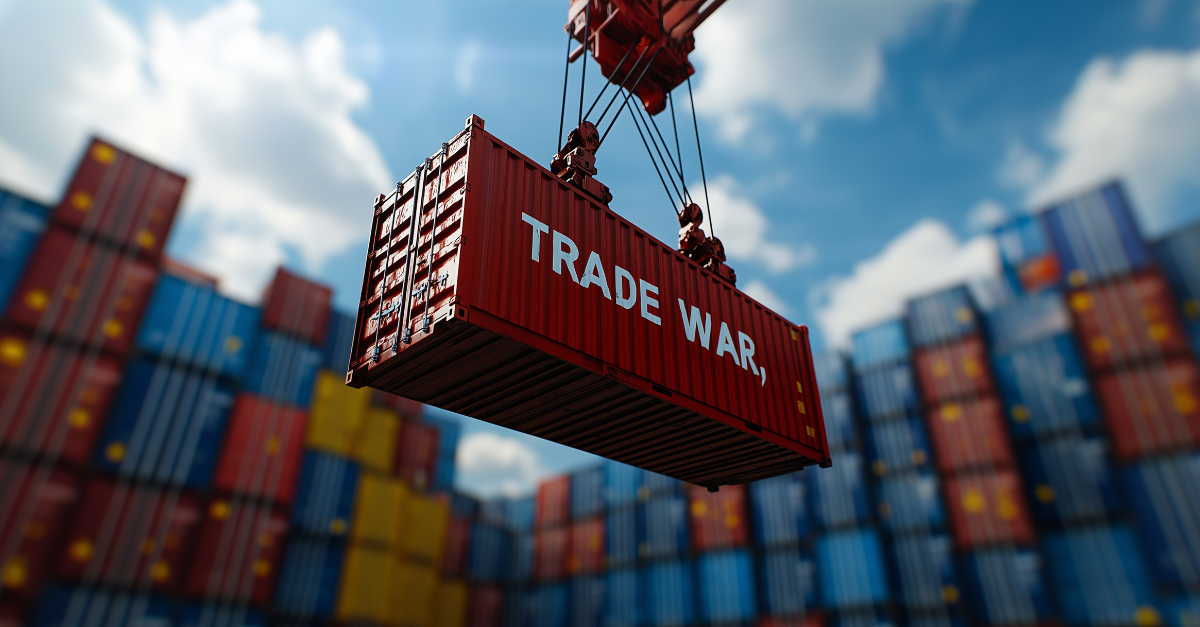With the U.S. once again sharpening its trade tools, tariffs are back in the headlines. But beyond the political theater, what exactly are tariffs—and more importantly, what aren’t they?
What are tariffs and how do they work?
At their core, tariffs are taxes imposed on imported goods. They raise the cost of those goods at the point of entry into a country. While commonly perceived as a tool to penalize foreign exporters, the cost is often transmitted through the supply chain:
- First to importers
- Then to domestic manufacturers
- Next to retailers
- Finally to consumers
In commodity markets, where prices are sensitive to input costs and margins are tight, the effects of tariffs can be swift and broadly felt.
Historical context and purpose of tariffs
Why impose tariffs at all? Historically, governments have used them for three main purposes:
- To protect domestic industries
- To respond to trade disputes
- To raise revenue
In recent decades, their role has expanded beyond pure economics, often serving as instruments of strategic negotiation. Tariffs can offer short-term support for industries considered vital to national interests, such as:
- Steel
- Semiconductors
- Electric vehicles
These sectors, recently cited in the U.S. administration’s proposed tariff measures, are seen as vulnerable to foreign subsidies that may distort competitive balance. When implemented with precision and clear objectives, tariffs may provide breathing room for domestic players to adapt and restructure.
However, these potential advantages come with trade-offs. Over time, tariffs can complicate global supply chains, invite retaliatory measures, and reduce market efficiency. A case in point: the U.S. steel tariffs under President Reagan in the 1980s, which provided temporary relief but ultimately failed to drive long-term competitiveness, leaving downstream industries facing higher input costs and reduced flexibility.
Who ultimately pays for tariffs?
Typically it is domestic buyers, both businesses and households. Importers often pass added costs along the supply chain to maintain profitability. While governments collect the tariff revenue, they do not offset the added cost. In commodity markets, where prices are largely set by global benchmarks and substitutes aren’t always viable, that pass through is fast and direct. What begins as a tax on a shipment, becomes a higher cost in a factory, a contract or a grocery sale.
To sum it up, tariffs are a powerful but blunt policy tool. They don’t just reshape trade flows, they influence risk, cost structure and competitive dynamics. Whether they serve as a catalyst for domestic growth or friction to efficiency often depends on how and how long they are applied.
The 2nd of April 2025 US tariff announcements
The second of April had quite an impact, especially as the tariffs imposed were much higher and broader than anticipated. Almost everything from everywhere got a 10% import tariff, which was to be effective from the 9th of April onwards. Many countries (or trade blocks) were worse off, as their trade deficit with the United States has triggered an even higher import tariff to be imposed:

There were exemptions for several industries, both positive and negative:
- No tariffs on key minerals or metals such as copper and zinc
- 25% import tariff on all automobiles and automobile parts to protect the US automobile industry and boost US production
Global reactions and international response
Supporters, opponents, friends, and foes of Trump and the United States have been very vocal about this over the past weeks, as the impact on the financial markets was felt immediately and trillions in value were lost within hours.
Exactly on the day that the US tariffs would come into effect, president Trump announced a 90-day pause on the higher-than-10% tariffs he imposed on many countries. Still, a 10% US import tariff is effective immediately, while China has received a total of 125% additional tariffs due to their reaction to the initial imposition of US import tariffs.
Types of international responses
Since April 2nd, we have seen various responses to the imposed US import tariffs:
- Acceptance
- Call for negotiation
- “Sophisticated” retaliation
- “Blunt” retaliation
Blunt retaliation: China’s approach
China is choosing to play tit-for-tat as they say the imposition of US import tariffs is “completely groundless and is a typical unilateral bullying practice.” As of the 10th of April, the additional US tariffs on Chinese goods are now 125% due to the Chinese reaction retaliation. All of this comes on top of everything already in place before April 2nd.
Negotiation: Vietnam’s strategy
Vietnam is on the other side of the spectrum and is actively trying to lower the US tariffs on Vietnamese goods. It is willing to negotiate and give in on many of its own tariffs to prevent Vietnamese-US trade from falling flat.
Europe’s mixed response
Europe had initially been a bit more sophisticated in its approach, but did choose to retaliate with import tariffs of its own. Lobbyists were able to exclude items such as:
- Dairy
- Bourbon
These exclusions came from fear of triggering a trade war in markets where they rely on US imports. Still, other products did end up on their tariff list:
- Soybeans
- Corn
- Meats
- Various other products
On the 10th of April, however, the European Commission responded to the 90-day pause with a 90-day pause of its own. The EU commission is now proposing to import more gas from the United States to balance out the US trade deficit with the EU. Time to negotiate.
Frequently asked questions about US tariffs
Q: How do tariffs affect consumer prices?
A: Tariffs typically increase consumer prices as the additional costs are passed down through the supply chain.
Q: Are tariffs effective at protecting domestic industries?
A: Tariffs can provide short-term protection but often fail to improve long-term competitiveness while raising costs for downstream industries.
Q: Who benefits from tariff revenue?
A: Government treasuries collect tariff revenue, but this doesn’t offset the overall economic costs.
Q: How long will the current US tariff policies remain in effect?
A: While a 10% baseline tariff is currently in effect, higher tariffs have been paused for 90 days to allow for negotiations.



